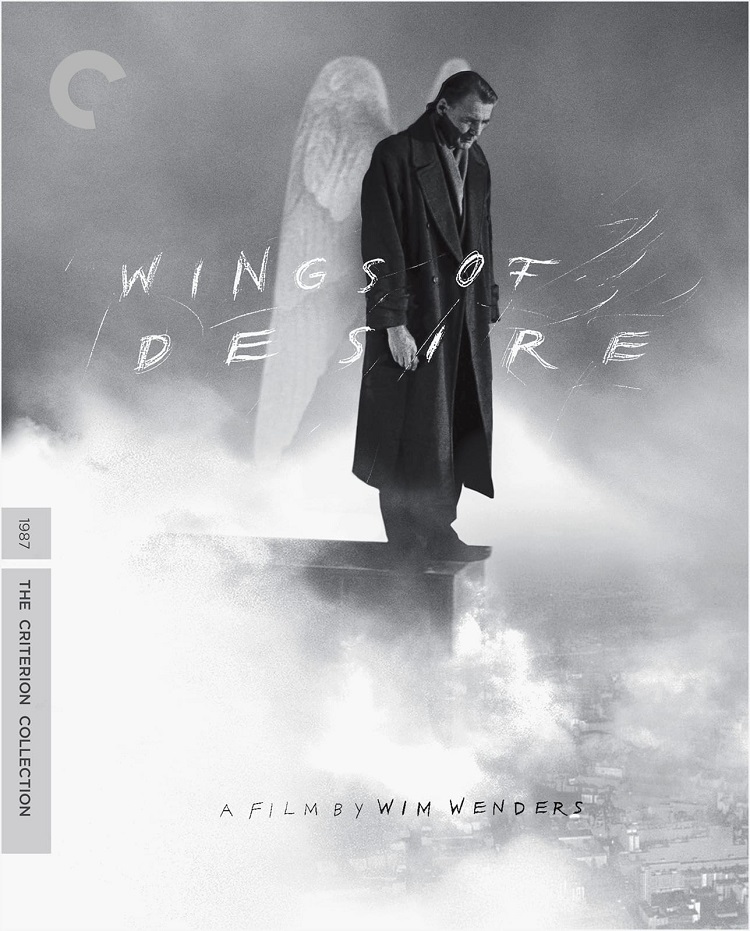
Not much happens in Wings of Desire (1987; dir. Wim Wenders), but it’s among the most beautiful of films.
In it, we follow two invisible guardian angels (Bruno Ganz and Otto Sander) as they bear witness to late-’80s West Berlin—an urban ruin of waste and renewal, the shattered city evoked by David Bowie’s Berlin trilogy. These angels can hear the private, unspoken thoughts of mortals. Lonely people crowd the metropolis. One angel crushes on a young trapeze artist (Solveig Dommartin). She digs Crime in the City Solution concerts. Then, inspired by Peter Falk (who plays himself as an ex-angel turned film star), the angel falls to earth—goes mortal—goes a-courtin’ the trapeze artist. Leaving a life of observation for one of real human connection and experience, the angel loves that he can eat, drink, and bleed. At a Nick Cave concert, the trapeze artist devotes herself to the angel.
Gorgeously shot by Henri Alekan (in stunning black & white for the angels’ point of view, otherwise in color), Wings of Desire is more about an elegiac mood than a story. But its light, poetic tone—its quiet but enchanting air of isolation and reflection—conveys a sad warmth toward the human condition quite unlike anything I’ve seen in a film. The movie doesn’t rush at you with sugared force. Rather, it (like the angels) takes everything in, rapt with the low, lyrical hum of lives living and dying. Ganz is terrific, as is Falk.
The movie haunts me.
Wenders approved the new Criterion Collection 4K UHD of Wings of Desire. And it’s a beaut. The restoration has a 5.1 surround DTS-HD Master Audio soundtrack. The 4K disc offers the film and the Blu-ray disc offers the film and special features. Features include audio commentary by Wenders and Falk; a 2003 documentary with interviews with cast & crew; a 1987 episode of Cinema cinemas that shows on-set footage; an interview with Alekan; excerpts from the film Alekan la Lumiere (1985) and from Ganz and Sander’s 1982 film about actor Curt Bois; notes and photos by art directors Heidi and Toni Ludi; and trailers. With the set, also, is a booklet with an essay by critic Michael Atkinson and writings by Wenders and playwright Peter Handke.